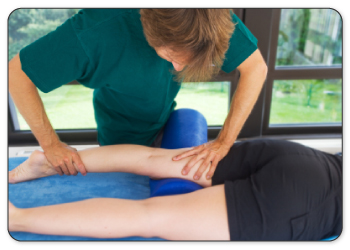Sports participation frequently results in injuries. Traumatic injuries from unexpected impacts, overuse injuries from repetitive strain, and other injuries are all possible. Leg injuries can affect the thigh, hip, and shin muscles and their corresponding bones. While some sports injuries may affect a portion of the leg, others may have more severe consequences that extend to the foot or the knee.
Acute Hamstring Tears
On all levels of physical competition, injuries to the hamstring muscles in the rear of the thighs are persistent. They significantly contribute to buttock and back pain, accounting for up to 29% of all lower extremity injuries across all sports. Unsurprisingly, hamstring injuries have been documented at a similar rate in sports like soccer, rugby, basketball, track and field, and gymnastics. Acute hamstring injuries frequently happen when exercising; however, they can also occur due to falls or other accidents. People with suspected hamstring injuries are often recommended to seek medical assistance because they experience sharp pain in the back of the leg and accompanying weakness.
Regrettably, the re-injury rate is relatively significant, especially in the first two weeks after the return to exercise. It is essential to correctly identify and treat an acute hamstring injury to prevent long-term issues, including strength deficiencies and persistent pain.
The Importance of Early Diagnosis, Treatment, and Rehabilitation
Being diagnosed and treated for a hamstring injury as soon as possible is crucial because:
- It has been demonstrated that early diagnosis, effective treatment, and a safe return to activity improve functional outcomes and reduce the risk of recurrent injuries.
- Usually, a hamstring injury that occurs again takes longer to heal. For instance, NFL players with repeated injuries reportedly need 2.5 times longer to recover and resume play than those with isolated damage incidents.
- It has been demonstrated that hamstring injuries lead to persistent anatomical abnormalities on MRI scans and during physical examinations.
- High (proximal) hamstring injuries might eventually develop into chronic tendinopathy if not appropriately treated. Due to this illness, the hamstring tendon, which connects the muscle to the sit bone, degenerates, which may cause excruciating agony and long-term incapacity.
Symptoms and Signs of Hamstring Tears
Depending on the original severity and location of the hamstring injury, a person may be severely disabled and need to take a large length of time off from exercising.
Sharp pain. Acute pain The back of the thigh or buttocks may suddenly and sharply hurt after the injury. The following symptoms are common in those with an acute hamstring strain:
A pop sensation or sound. There may also be an audible or tactile “snap” and a feeling that the leg is giving way along with this acute agony.
Bearing weight and moving with difficulty. It could be challenging or impossible to carry on with activities after suffering a hamstring strain. The person might even find it difficult to stand up from a sitting posture, walk at an average pace, or descend stairs. Patients with an acute hamstring injury may also walk with a “stiff-leg” gait and a pronounced limp.
Bruising. Besides the thigh, bruising and discoloration can occasionally be visible.
Deformity and swelling. A complete tear of the muscle-tendon junction may cause apparent malformations beneath the skin, such as misshapen muscles, as well as bruises. Contraction makes these defects visible and palpable.
Sitting causes discomfort and pain. Avulsion type and proximal hamstring injuries, in which the tendon separates from the pelvic bone, frequently cause patients to experience pain and discomfort while sitting down.
Diagnosis
A skilled clinician’s patient history and physical examination can, as with most musculoskeletal injuries, result in an accurate diagnosis of acute hamstring injuries. The degree of the hamstring tear (grade 1 to 3) may be assessed by a medical professional based on pain and physical restrictions, such as weakness and range of motion loss. These results aid in determining the patient’s return to activity window. The most severe tears, grade 3, can take months to heal. A physical examination, a patient interview, and potentially medical imaging will all be part of the diagnostic procedure. Treatment for a hamstring tear varies on where and how bad the tear is. Patients with myotendinous junction injuries have a different course of treatment than those with hamstring avulsion-type injuries.
Myotendinous junction tears treatment
Patients who sustain myotendinous junction damage often heal more quickly and function more frequently than those who suffer an avulsion-type injury. Myotendinous junction tears are often treated non-operatively (conservatively), with rehabilitation followed by a timely return to play. Based on the stages of healing, conservative management is separated into three sections.
Conclusion
It has been demonstrated that the above disorders can benefit from physiotherapy treatment and management in pain relief, injury rehabilitation, hastening recovery, and controlling chronic symptoms. Education, self-care management, exercise therapy, manual therapy, and spinal manipulation are all popular forms of treatment for pain that registered physiotherapists utilize. Additional therapies, including laser therapy, soft tissue release, and acupuncture, may also be beneficial. A licensed physiotherapist can expertly analyze and examine your problem and suggest the best course of treatment and rehabilitation.


